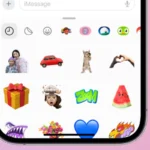Google DeepMind’s latest innovation, Veo 3, is being hailed as a paradigm shift in AI-generated media. Building upon the momentum of AI image and video tools, Veo 3 isn’t just another visual generator—it’s a full-stack cinematic engine. With native audio, fine-tuned shot control, character continuity, and precise lip-syncing, Veo 3 positions itself not as a toy, but as a serious tool for storytellers. When paired with its dedicated creative interface, Flow, this technology signals a tectonic shift for the entertainment and media industries.
Veo 3 Ushers in the End of Silent AI Cinema
While previous AI models like OpenAI’s Sora wowed the internet with visually rich but silent clips, Veo 3 pushes the format into a new era. It’s the first public-facing AI video model from a tech giant that generates videos with native audio—including synchronized dialogue, ambient soundscapes, and emotional musical scores. DeepMind’s CEO Demis Hassabis has accurately described this as the “end of AI video’s silent era.”
This built-in audio capability is especially transformative for creators. Previously, AI-generated video had to be manually paired with voiceovers or background sound—a time-consuming and technically complex task. With Veo 3, creators simply describe a scene and receive a full cinematic sequence, audio and all.
Standout Features That Redefine AI-Generated Video
Veo 3 combines generative text-to-video with several advanced technologies that were previously scattered across multiple platforms or entirely unavailable:
- Native Audio Generation: Dialogue, effects, and music are generated to match the visual narrative.
- 1080p Cinematic Output: The model delivers full HD video resolution, offering clear visuals ready for professional use.
- Precise Lip-Syncing: Spoken lines line up seamlessly with character mouth movements, boosting realism.
- Reference-Guided Design: Users can input visual references—such as specific art styles, characters, or objects—to influence and stabilize Veo’s output.
- Extended Scene Coherence: Unlike previous tools that faltered after a few seconds, Veo 3 maintains continuity and pacing across longer scenes.
- Flow Camera Control: Users can simulate pans, dollies, tilts, zooms, and tracking shots with surprising finesse.
Together, these features enable the creation of scenes that resemble professionally directed sequences, allowing even amateur creators to simulate Hollywood-level production.
Flow: An Entire Creative Studio in One Tool
Accompanying Veo 3 is Flow, a creative interface that acts as both control panel and studio. It’s built to make the generation process intuitive while expanding what’s possible:
- SceneBuilder: Adjust and recompose scenes post-generation, improving editing flexibility.
- Asset Libraries: Manage characters, environments, and thematic elements for consistency across projects.
- Prompt Management: Track creative instructions and reuse setups to fine-tune narrative arcs.
- Flow TV: A social hub showcasing Veo-generated content and best practices.
Flow is not just a dashboard—it’s the operating system for AI cinema, allowing teams or individuals to ideate, generate, and iterate on scenes with almost no physical constraints.
Darren Aronofsky and the Professional Seal of Approval
DeepMind has already secured the endorsement of the film industry. Acclaimed director Darren Aronofsky—known for Requiem for a Dream and The Whale—has teamed up with DeepMind via his studio, Primordial Soup. Their first collaborative project, Ancestra, will premiere at the 2025 Tribeca Festival and merges live-action with Veo 3-generated visuals.
The implication is clear: this isn’t a theoretical tool for future creatives. It’s already in the hands of Hollywood’s elite, actively reshaping how films are made.
Democratizing and Disrupting the Industry
Veo 3 and Flow together represent both a creative renaissance and a logistical revolution:
- Lower Costs: Indie filmmakers no longer need massive budgets for sets, locations, or VFX-heavy sequences.
- Rapid Prototyping: Directors can experiment with scene composition, lighting, or dialogue variations without reshoots.
- Remote Filmmaking: Collaboration is location-agnostic; creatives around the globe can contribute to one project in real-time.
At the same time, this rapid acceleration invites valid concerns.
Ethical and Industry Challenges
- Job Displacement: As AI handles more aspects of production, the demand for traditional roles—storyboard artists, VFX teams, voice actors—may shrink.
- Copyright and IP Confusion: Who owns the rights to AI-generated stories or characters? Current law hasn’t caught up with these questions.
- Deepfakes and Media Trust: The line between fiction and deception will blur further. Watermarking like DeepMind’s SynthID helps, but isn’t foolproof.
- Creative Authenticity: Can AI truly replicate human nuance, or will cinema lose its soul in a flood of algorithmically generated sequences?
Currently in Limited Release
As of now, Veo 3 is only available to users of Google’s Gemini AI Ultra subscription tier in the U.S. This limited rollout suggests that DeepMind is carefully curating early use cases—likely to refine legal frameworks, safety features, and creative guidelines before wider release.
In an era where Microsoft is doubling down on Copilot and Meta is building AI-native wearables, Veo 3 may become Google’s answer to AI’s most cinematic ambitions.
Veo 3 isn’t just a model—it’s a movement. Whether it empowers the next generation of indie filmmakers or unsettles the foundations of professional media production, it represents a fundamental shift in how stories are told, imagined, and realized. The challenge now isn’t just technical. It’s human.
Best AI Chatbots of 2025
AI chatbots have changed how we talk to computers. They can answer questions, help with tasks, and even chat like friends. The best AI chatbots in 2025 include options like ChatGPT, Copilot, Claude, DeepSeek, and Meta AI, each with unique strengths for different needs.
These smart tools keep getting better every day. Some are free to use while others cost money but offer more features. People pick chatbots based on what they need – homework help, creative writing, or just someone to talk to. The right choice depends on what matters most to you.
1) ChatGPT (OpenAI)
ChatGPT stands as the most popular AI chatbot today. Released by OpenAI in November 2022, it quickly became a household name in the AI space. The chatbot uses advanced language models to answer questions and create content.
Users can try the basic version of ChatGPT for free. It handles writing tasks, helps with learning, and supports brainstorming sessions without any cost barriers.
The latest version, ChatGPT-4o, is now available for free users with some limits. This marks a big change from earlier policies where the most advanced features were paid-only.
For those needing more power, ChatGPT Plus offers the full ChatGPT-4 experience. This premium version comes with faster response times and priority access during busy periods.
ChatGPT excels at writing tasks. It can draft emails, create stories, or help with homework assignments. The system also explains complex topics in simple terms.
The chatbot remembers your past questions within a conversation. This feature helps it provide more helpful answers as your chat continues.
Many experts rank ChatGPT as the best overall AI chatbot. Its balance of power and ease of use makes it suitable for both beginners and advanced users.
ChatGPT connects to the internet in its newer versions. This lets it search for current information and provide up-to-date answers on recent events.
The system works well on both computers and phones. Users can chat with it through a website or mobile app without losing any key features.
2) Claude (Anthropic)
Claude has become one of the top AI chatbots in 2025. Built by Anthropic, Claude aims to be helpful, honest, and safe for users seeking an AI assistant.
The latest version, Claude 3.7 Sonnet, offers several improvements over past models. It handles more complex tasks and understands context better than earlier versions.
Claude stands out for its nuanced reasoning abilities. It can analyze detailed information and provide thoughtful responses that many users find helpful for work tasks.
One key feature of Claude is its large context window. This lets users share longer documents and have more in-depth conversations without the AI losing track.
Many users choose Claude for writing assistance, coding help, and data analysis. Its ability to follow instructions carefully makes it popular for professional use.
Claude’s interface at Claude.ai is simple to use. The clean design helps users focus on their conversations with the AI.
When compared to other AI chatbots, Claude is known for being more careful with information. It tries to avoid making things up and will tell you when it’s unsure.
Anthropic has focused on making Claude both powerful and responsible. The company trains its models to reduce harmful outputs while still being useful.
For coding tasks, some users consider Claude one of the best assistants available. It can understand programming concepts and help debug problems.
Claude can be accessed through its website or through some third-party applications. This makes it flexible for different work settings and needs.
3) Copilot (Microsoft)
Microsoft Copilot has become a major player in the AI chatbot market. It runs on GPT-4 Turbo technology and offers users a powerful AI assistant experience right at their fingertips.
Formerly known as Bing Chat, Microsoft Copilot serves as an AI companion designed to inform, entertain, and inspire users. It handles everything from simple questions to complex requests with impressive accuracy.
Users can ask Copilot to explore topics, generate AI images, and use AI-powered search features. The chatbot excels at giving straightforward answers and practical advice for everyday questions.
What sets Copilot apart is its deep integration with Microsoft’s ecosystem. Users can access this tool through the Microsoft website or through various Microsoft applications where it’s been integrated.
For businesses, Microsoft offers Copilot Studio, which allows companies to build custom AI chatbots. These bots can answer questions and solve problems around the clock.
In comparison tests against other AI chatbots like ChatGPT, Copilot has shown distinct strengths. Its search capabilities and real-time information access give it an edge in certain tasks.
The personal AI assistant aspect of Copilot aims to save users time on common tasks. It can summarize information, draft content, and help with research in just seconds.
Since its launch as the new Bing in February 2023, Microsoft has continued to improve Copilot’s features and capabilities. The company regularly updates the system to enhance its performance and usefulness.
4) Google Gemini
Google Gemini is a powerful AI chatbot that competes directly with ChatGPT in the AI assistant space. It was previously known as Bard before Google rebranded it.
Gemini runs on Google’s advanced large language models. The free version currently uses the Gemini 1.5 Flash model, which offers impressive speed and accuracy for everyday tasks.
Many users find Gemini particularly good for creative tasks and image generation. Its ability to create and manipulate images gives it an advantage over some competitors in the visual creativity department.
One of Gemini’s strengths is its quick response time. Users on Reddit have noted that Gemini 1.5 Flash is super fast while maintaining good accuracy. This makes it ideal for quick questions and brainstorming sessions.
Google’s vast knowledge base gives Gemini an edge in certain areas. It can pull current information from Google’s search index, making it useful for up-to-date queries.
Gemini offers a larger feature set than ChatGPT’s free version. This includes the ability to process and analyze images, create visual content, and link directly with other Google services.
For users deeply invested in the Google ecosystem, Gemini provides smooth integration with other Google products. This connectivity makes it a practical choice for those already using Google’s suite of tools.
While ChatGPT may edge out Gemini in some text-based tasks, Gemini shows particular strength in multimodal interactions that combine text and images.
5) Meta AI
Meta AI is a versatile chatbot created by Meta (formerly Facebook). This AI assistant helps users learn, create, and connect in new ways through various interactive features.
One standout aspect of Meta AI is its voice capabilities. Users can talk with the assistant using recognizable voices, making interactions feel more natural and engaging.
The chatbot also excels at image generation and sharing. You can ask Meta AI to create images based on your descriptions, then share these creations with friends or on social media platforms.
Meta AI stands among other leading AI chatbots like ChatGPT, Claude, and Gemini. It offers a unique set of features that focus on social interaction and creative expression.
The platform continues to improve with regular updates. Meta’s strong background in social media gives its AI assistant an edge in understanding how people communicate online.
Meta AI works across Meta’s family of apps. This integration makes it easy to access the assistant while using Facebook, Instagram, or WhatsApp.
Users appreciate Meta AI’s friendly interface and quick responses. The chatbot processes questions quickly and provides helpful information without unnecessary complexity.
6) DeepSeek
DeepSeek is a newer AI chatbot that has quickly gained attention in the AI assistant market. The company first released its models—DeepSeek Coder, DeepSeek LLM, and DeepSeek Chat—in November 2023, but gained more widespread recognition in early 2025.
DeepSeek has temporarily dethroned OpenAI’s ChatGPT from the top spot on Apple’s US App Store. This shows its growing popularity among users looking for AI assistant options.
The chatbot uses two main AI models: DeepSeek V3 and R1. Many users appreciate that DeepSeek offers a free version with strong capabilities, making advanced AI tools more accessible.
For coders and developers, DeepSeek has become a notable option. However, in comparisons of coding AI tools, it doesn’t always rank at the top, with other options like ChatGPT Plus often preferred.
DeepSeek stands out for using an open source reasoning model. This approach helps it compete with other major AI assistants in the market.
In head-to-head tests against other AI chatbots like ChatGPT, Grok, and Gemini, DeepSeek has shown competitive performance. These comparison tests help users decide which AI assistant best fits their needs.
7) Jasper
Jasper is a specialized AI tool built for marketing and business needs. Unlike broader AI chatbots, Jasper focuses on helping companies create content and marketing materials.
Jasper stands out as the best AI chatbot for businesses and marketers with over 50 specialized features. These tools help teams create better content faster.
The pricing for Jasper starts at $49 per month with no free version available. This is higher than ChatGPT Plus which costs $20 monthly.
What makes Jasper different is its focus on marketing. While ChatGPT handles many general tasks, Jasper targets specific marketing needs like copywriting, blog posts, and ad content.
Users who need AI specifically for marketing often prefer Jasper’s specialized features. Its tools are built to understand marketing language and create compelling copy.
Jasper also offers templates for different types of content. This makes it easier for marketing teams to quickly generate social media posts, email campaigns, and website content.
The platform continues to add new features to stay competitive in the AI market. Its business focus helps it stand apart from general-purpose chatbots.
For companies looking to speed up their content creation, Jasper provides a solution that understands marketing goals. Its specialized nature makes it worth considering despite the higher price tag.
8) Perplexity
Perplexity AI stands out as a free AI chatbot that connects to the internet to provide up-to-date information with sources. When you visit the site, you can start using it right away with its clean, user-friendly interface.
Unlike some other AI tools, Perplexity focuses on giving accurate answers with links to where the information comes from. This makes it great for research and fact-checking.
The free version offers plenty of features for everyday use. It can answer questions about current events, help with homework, or explain complex topics in simple terms.
For those who need more, Perplexity offers a paid version with extra features. This version is especially helpful for market research and gathering specific information.
CNET lists Perplexity among the best free AI chatbots of 2025, alongside ChatGPT. Each has its strengths, but Perplexity shines when you need answers with clear sources.
Perplexity describes itself as an “AI-powered answer engine” rather than just a chatbot. It aims to give trusted, real-time answers to any question you might have.
When compared to ChatGPT, Perplexity has its own unique benefits. According to Zapier, both are powerful tools, but they serve different purposes and can be useful in their own ways.
The main advantage of Perplexity is how it connects to the latest information online. This means it can talk about recent events and provide current data that other AI tools might not have.
9) Zapier Agents
Zapier Agents represent a fresh approach to AI chatbots with a focus on automation. These AI assistants can handle tasks beyond just answering questions – they can actually take action within your workflows.
The key advantage of Zapier Agents for automation is their ability to connect with thousands of apps through Zapier’s integration platform. This makes them particularly useful for business users who need to connect different tools.
You can build custom AI chatbots with Zapier Chatbots without any coding skills. This tool lets you create bots that not only chat but also trigger automated actions across your favorite apps.
One popular template is the to-do list bot, which helps users manage tasks efficiently. The platform offers various templates to get users started quickly with useful automations.
Unlike some other chatbots that just provide information, Zapier Agents can perform real actions like adding contacts to your CRM, scheduling meetings, or posting updates to your team chat.
The setup process is straightforward, making it accessible even for those with limited technical knowledge. Users can customize their agents to match specific business needs and workflows.
Zapier’s extensive app connections give these agents an edge for work-related tasks. They integrate seamlessly with popular tools like Google Workspace, Slack, Trello, and hundreds of other business applications.
For those focused on productivity, Zapier’s AI productivity tools offer a practical way to automate repetitive tasks and streamline workflows across multiple platforms.
10) Grok (xAI)
Grok is an AI chatbot created by xAI, Elon Musk’s artificial intelligence company. It stands out for its unique approach to answering questions with fewer restrictions than many other AI systems.
Grok 3, the latest version, was recently launched with claims that it surpasses all current AI rivals. The system markets itself as a “truth-seeking AI companion” that provides unfiltered answers.
What makes Grok different is its design philosophy. The AI aims to be more straightforward and less censored than competitors, reflecting Musk’s vision for AI that speaks more freely.
The system has shown strong skills in reasoning, coding, and visual processing. These abilities help users solve complex problems and work with different types of information.
Grok has earned an Elo rating of 1402 in the Chatbot Arena, placing it among top AI systems. This rating system helps compare different AI chatbots based on user preferences.
Users who want access to Grok need a premium subscription to X (formerly Twitter). This connection to Musk’s social media platform sets it apart from other AI tools that offer standalone services.
Grok shows superior capabilities in math and coding problems compared to many competitors. These strengths make it useful for technical tasks and problem-solving.
The system also features real-time data access, allowing it to discuss current events with more accuracy than AI models limited to older training data.
Understanding AI Chatbots
AI chatbots are computer programs that use artificial intelligence to talk with humans through text or voice. These digital assistants have become popular tools for customer service, personal help, and information gathering.
How AI Chatbots Work
AI chatbots use several technologies to understand and respond to human inputs. At their core, most modern chatbots rely on large language models (LLMs) trained on vast amounts of text data.
When you type a message, the chatbot processes your words through natural language processing (NLP) to grasp your meaning. The system analyzes your question or statement and creates a response based on patterns it learned during training.
Most advanced chatbots like ChatGPT and Claude use a technique called transformer architecture. This helps them understand context and maintain more natural conversations.
Some chatbots can:
- Remember previous parts of your conversation
- Learn from interactions over time
- Connect to outside data sources
- Perform specific tasks like booking appointments
The quality of responses depends on the model’s size, training data, and fine-tuning process.
Key Features of AI Chatbots
Modern AI chatbots offer a range of helpful features that make them useful for many tasks. The best chatbots provide quick responses and can handle complex questions with accurate information.
Many leading chatbots like Google Gemini offer strong visualization capabilities, creating charts or images to support their text responses. This makes complex information easier to understand.
Internet access is another important feature found in tools like Perplexity, allowing chatbots to search for and provide up-to-date information rather than relying solely on training data.
The most useful chatbots also offer:
- Custom instructions to shape responses
- File upload capabilities
- Code generation and debugging
- Different conversation modes for various tasks
- Memory of past conversations
These features help chatbots serve as true digital assistants rather than simple question-answering tools.
Applications of AI Chatbots
AI chatbots have transformed how businesses interact with customers and streamlined internal operations across industries. These versatile tools now handle everything from answering basic questions to completing complex transactions.
Customer Service and Support
AI chatbots have revolutionized customer service by providing 24/7 support without human limitations. They can handle multiple inquiries simultaneously, reducing wait times and increasing customer satisfaction.
Many companies use chatbots as the first point of contact for customer questions. ChatGPT and other leading AI assistants can answer FAQs, troubleshoot common problems, and collect important information before handing complex issues to human agents.
These tools excel at:
- Ticket routing – directing customers to the right department
- Basic troubleshooting – solving simple technical issues
- Appointment scheduling – managing bookings without human intervention
Banking and telecom sectors have seen particular success with support chatbots. They handle account inquiries, password resets, and billing questions efficiently, freeing human agents to tackle more complex problems.
AI Chatbots in E-commerce
Online retailers use AI chatbots to boost sales and improve shopping experiences. These digital assistants help customers find products, compare options, and complete purchases without leaving the chat interface.
Chatbots in e-commerce can:
- Recommend products based on browsing history
- Answer questions about shipping, returns, and product features
- Send personalized offers to customers
- Guide shoppers through checkout processes
The best e-commerce chatbots combine product knowledge with conversational skills. They remember customer preferences and previous interactions, creating a more personal shopping experience.
Fashion retailers often use these tools to help customers find the right size or style. Grocery stores employ them for reordering common items and suggesting recipes based on past purchases.
Frequently Asked Questions
People ask many questions about AI chatbots. Users want to know which ones are smartest, most human-like, and free to use. They also wonder about roleplay abilities and alternatives to ChatGPT.
Who are the top contenders for the most intelligent chatbot currently available?
The race for the smartest AI chatbot is tight in 2025. Claude from Anthropic leads in reasoning capability and complex problem-solving tasks.
ChatGPT with GPT-4o stands out for its broad knowledge base and ability to understand context. Its performance on standardized tests and coding challenges shows its intelligence.
Google Gemini excels in real-time information processing and integration with search capabilities. This makes it especially good at answering fact-based questions.
What is the most advanced AI chatbot that offers a humanlike interaction experience?
Claude by Anthropic provides the most natural conversation flow among leading chatbots. Its responses include appropriate pauses, casual language, and conversational transitions that feel less robotic.
ChatGPT has made significant strides in personality customization and emotional intelligence. Users report feeling like they’re talking to a helpful person rather than a machine.
Microsoft Copilot blends professional responses with a friendly tone. Its ability to remember previous conversations and adapt to user preferences enhances the human-like experience.
Which are the leading free AI chatbots suitable for a variety of tasks?
ChatGPT offers a robust free tier that handles writing, coding, creative work, and research. The free version provides access to GPT-3.5, which remains capable for everyday tasks.
Google Gemini’s free version excels at information retrieval and basic assistance. It connects with Google’s suite of tools for expanded functionality without cost.
Meta AI provides free access through Facebook and Instagram platforms. It shines at casual conversation, content creation, and image generation tasks without subscription fees.
How does the roleplay capability compare across the latest AI chatbots?
ChatGPT leads in roleplay capabilities with its extensive customization options. Users can define specific character traits, expertise levels, and communication styles.
Claude offers nuanced roleplay with stronger ethical guardrails. It maintains character consistency throughout extended conversations while avoiding inappropriate content.
Google Gemini provides more limited roleplay functions. It focuses on professional roles like tutor, coach, or assistant rather than fictional characters.
Are there any AI chatbots that can be considered significantly superior to ChatGPT?
Claude outperforms ChatGPT in long-form text processing. It can handle documents up to 200,000 tokens, making it better for analyzing lengthy content like research papers or books.
Google Gemini exceeds ChatGPT in current events knowledge. Its integration with search provides more up-to-date information than ChatGPT’s training cutoff allows.
Microsoft Copilot shows advantages in productivity tasks. Its deep integration with Office apps and Windows gives it unique strengths for workplace applications.
What AI chatbot platforms are most frequently recommended by the online community?
ChatGPT remains the most widely recommended general-purpose AI chatbot. Its versatility and continuous improvements keep it popular for both casual and professional users.
Claude receives strong recommendations for academic and research purposes. Online communities praise its ability to handle complex reasoning and provide transparent explanations.
Microsoft Copilot earns recommendations from business professionals. Its seamless integration with Microsoft’s ecosystem makes it the preferred choice in workplace settings.







